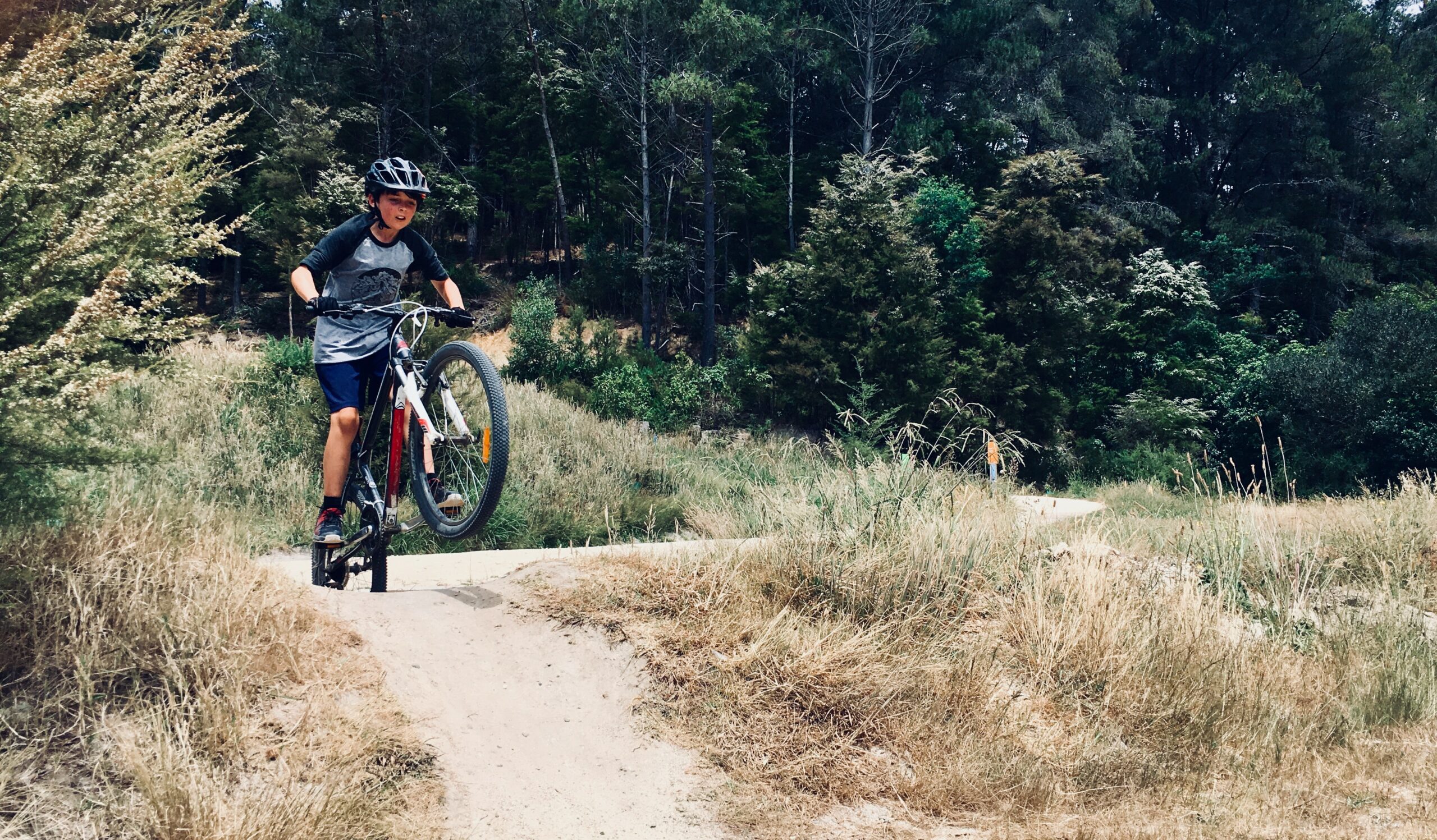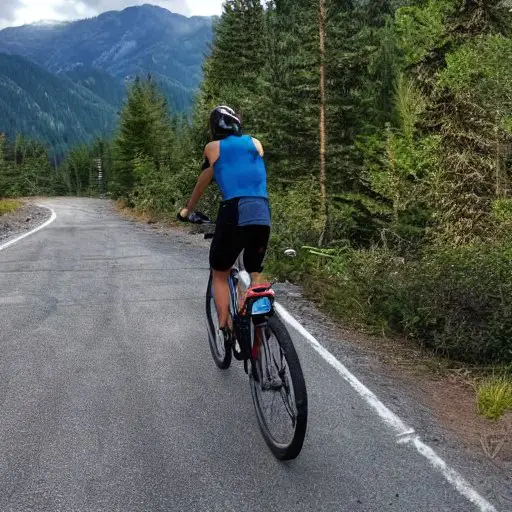Does full suspension truly provide an unparalleled safety net on the trails, or does the unwavering control of a hardtail hold the key to a safer adventure?
I’m hurtling down a technically challenging trail, nestled comfortably within the arms of a full suspension mountain bike.
The wind whips through my hair, and every rough terrain feature appears to melt away beneath me.
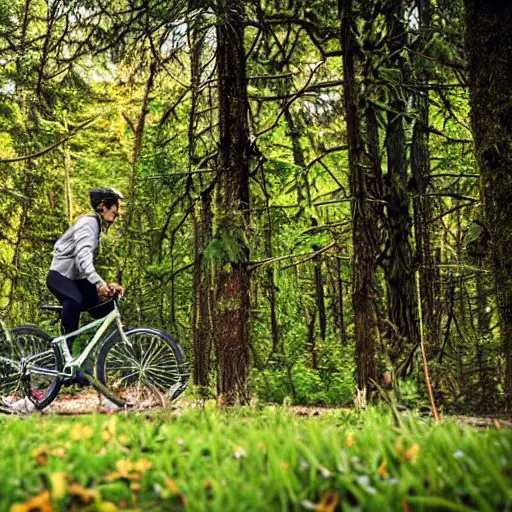
Suddenly, an unexpected obstacle propels me into the air like a mischievous trampoline.
I land with an unforeseen jolt, snapping back to reality.
This incident sparked a thought: Does full suspension genuinely live up to its reputation as the ultimate safeguard?
Our captivating journey will lead us through an in-depth analysis of full suspension and hardtail mountain bikes, bolstered by concrete real-world data, expert insights, and firsthand accounts.
By the conclusion of our expedition, you’ll be equipped with the knowledge needed to make an informed choice that resonates with your riding preferences and safety priorities.
Before we plunge into the depths of this discourse, let’s uncover a fascinating historical tidbit:
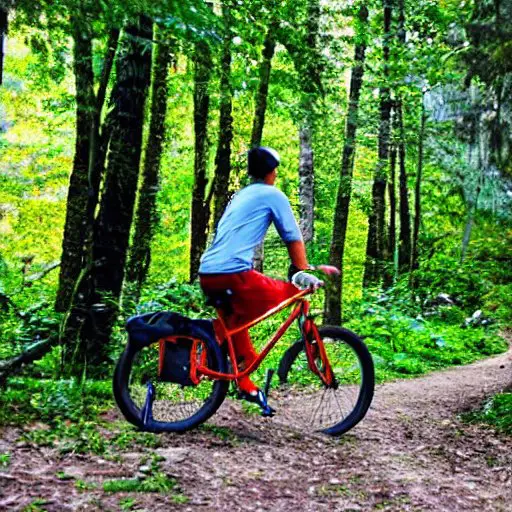
Did you know that the origins of full suspension bikes can be traced back to the demanding world of cross-country racing in the late 1980s?
The iconic Specialized Stumpjumper FSR, unveiled in 1989, heralded a new era by introducing a revolutionary design aimed at delivering smoother and swifter rides on unpredictable trails.
Full Suspension Vs Hardtail Safety
| Full Suspension | Hardtail | |
|---|---|---|
| Comfort on Rough Terrain | Offers superior comfort with dual suspension systems | Provides less comfort due to lack of rear suspension |
| Control on Technical Descents | Enhanced control and stability over rugged descents | Requires finesse and skill for precise descents |
| Efficiency on Smooth Trails | May experience slightly reduced efficiency on flat, smooth terrain | Offers efficient power transfer on flat trails |
| Jumping and Airborne Tricks | Cushions landings for aerial maneuvers | Demands rider skill for controlled landings |
| Adaptability to Varied Terrains | Excels in adapting to changing terrains | Responsive on diverse terrains with direct feel |
| Weight | Generally heavier due to dual suspension components | Lighter weight due to simpler frame design |
| Climbing Efficiency | May exhibit reduced efficiency on steep climbs | Offers efficient climbing with lighter frame |
| Technical Trail Mastery | Provides stability and control in technical sections | Requires rider finesse for navigating technical trails |
| Long-Distance Comfort | Comfortable for longer rides due to suspension | May cause more fatigue on extended rides |
| Maintenance Complexity | Requires more maintenance due to dual suspension components | Generally simpler maintenance with fewer components |
| Trail Speed | May maintain higher speed through rough sections | Requires precise handling for maintaining speed |
| Affordability | Often more expensive due to advanced suspension technology | Typically more budget-friendly |
| Jump Tracks Performance | Provides cushioning for jumps and smooth landings | Requires rider skill for controlled jump landings |
| Downhill Stability | Offers enhanced stability and confidence on descents | Requires rider input for maintaining stability |
| Cross-Country Racing | May be less efficient on smooth, flat cross-country tracks | Offers efficient power transfer for cross-country races |
| Technical Climbs | May struggle on challenging technical climbs | Requires rider effort for technical ascent mastery |
| Ride Precision | Provides stability and predictability in challenging conditions | Requires rider finesse for precise handling |
| Enduro Performance | Excels in endurance races and varied terrain | Requires rider finesse for enduro challenges |
| Longevity | May experience more wear and tear on suspension components | Can exhibit greater durability due to simpler design |
| Beginner Friendliness | Can be forgiving for beginners due to cushioned ride | Encourages skill development for beginners |
| Overall Versatility | Highly versatile across a range of terrains and riding styles | Versatile with direct feel suited for certain terrains |
The Luxurious Comfort of Full Suspension
Envision this scenario: you’re navigating a treacherous downhill stretch, reminiscent of the legendary “A-Line” trail at Whistler Bike Park.
With a full suspension rig beneath you, the experience is nothing short of mesmerizing.

The intricate interplay between the front and rear suspension systems converts every bump and impact into a gentle nudge, allowing you to maintain mastery while feeling like you’re gliding over the landscape.
Consider the Yeti SB6, an epitome of full suspension brilliance.
Conquering rugged trails like Sedona’s “Hiline” metamorphoses into an elegant ballet of fluidity and poise.
The bike’s Switch Infinity suspension mechanism adeptly adapts to changing terrains, ensuring a seamless ride even when encountering roots, rocks, and precipitous drops.
The Precision and Finesse of Hardtails: Dancing on the Edge
Now, let’s transition into the realm of hardtail mountain bikes – minimalist marvels renowned for their direct communion with the trail.
Imagine yourself on a challenging cross-country loop in Moab, Utah, where each twist and turn demands surgical precision.

Your hardtail responds with an immediacy that feels instinctive, encouraging you to maneuver obstacles with grace.
Meet the Specialized Epic Hardtail, a testament to precision and efficiency.
This lightweight champion embraces trails like the 18 Road Trails in Fruita, Colorado, with a sense of purpose.
Its streamlined design transmits your power directly to the trail, enabling you to conquer ascents and descents with unwavering authority.
Tailoring Your Steed to the Terrain
Let’s pause to dissect the terrain – your choice of steed greatly hinges on the trails you intend to conquer:
| Trail Type | Full Suspension | Hardtail |
|---|---|---|
| Technical Descents | ✔ Provides superior control and comfort | ✖ Demands finesse for rugged descents |
| XC Races | ✖ May be less efficient on smooth, flat terrain | ✔ Offers speed advantage and efficiency |
| Jump Tracks | ✔ Cushions landings, ideal for jumps | ✖ Requires skill for controlled landings |
| Enduro Thrills | ✔ Excels with stability on varied terrains | ✖ Demands finesse in technical sections |
| Climbing Challenges | ✖ May be less efficient on steep climbs | ✔ Excels in climbing with reduced weight |
| Trail Versatility | ✔ Adapts well to unpredictable trails | ✔ Offers a direct feel and responsiveness |
Mastering the Trail – Safety Strategies for Riding Mastery
- Ride Within Your Limits: Embrace the thrill, but always respect your boundaries.
- Gear Up: Helmets, pads, and gloves are your trail armor – prioritize safety.
- Mastery of Technique: Both full suspension and hardtail riders benefit from refining core skills.
- Bike Inspection Ritual: Regularly assess your bike for signs of wear or malfunction.
- Trail Experimentation: Experience is the ultimate teacher – test different bikes on diverse terrains to find your perfect match.
- Essential Trail Accessories: Explore the must-have accessories that enhance your riding experience.
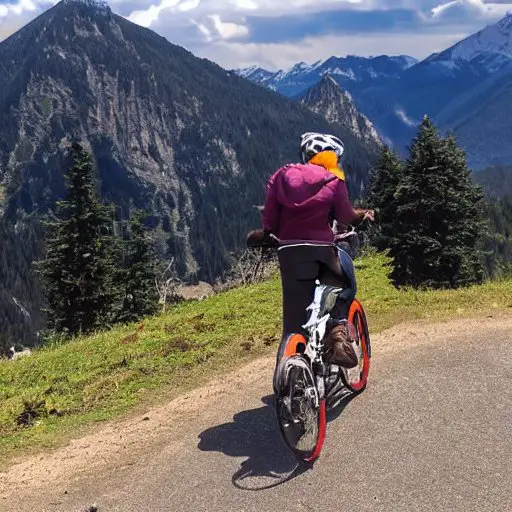
What Are the Disadvantages of a Full-Suspension Bike?
Higher Price Tag: Full-suspension bikes tend to hit your wallet a bit harder compared to their hardtail cousins.
For instance, a top-tier full-suspension model like the Santa Cruz Nomad can set you back around $5,000 to $8,000, whereas a comparable hardtail like the Santa Cruz Chameleon might cost you $2,000 to $3,000.
Heavier Weight: The extra suspension components and frame design can add some pounds to your ride.
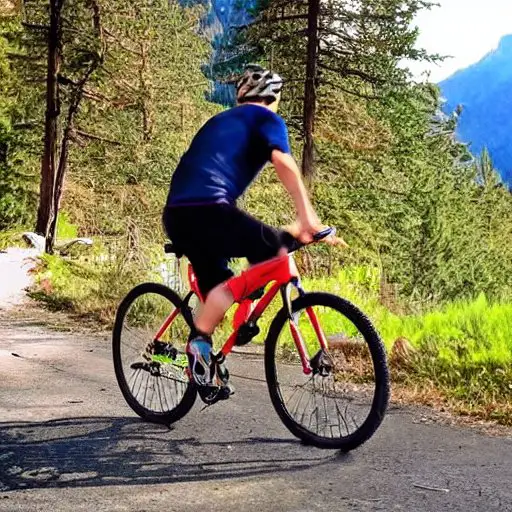
Picture this: a full-suspension Yeti SB150 weighing in at around 30 pounds, while a hardtail Santa Cruz Highball tips the scales at a svelter 23 pounds.
Reduced Pedaling Efficiency: When you’re grinding up those steep inclines, the rear suspension can gobble up some of your pedaling power, translating into less efficient climbs.
Take the Trek Fuel EX, for example, it might not pedal as efficiently uphill as the Trek Procaliber hardtail.
Maintenance Complexity: More moving parts mean more maintenance.
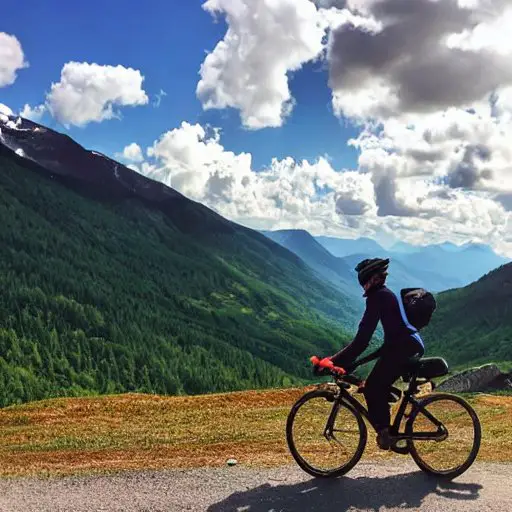
Think about it: tuning and maintaining the suspension components of a full-suspension Pivot Mach 5.5 requires a tad more effort compared to the straightforward upkeep of a hardtail Kona Honzo.
Trail Buzz: Despite the plushness, full-suspension bikes can sometimes transmit more trail vibrations to you.
So, on those smoother sections, you might feel slightly disconnected from the trail compared to the direct feel of a hardtail like the Specialized Fuse.
Learning Curve: Mastering the art of tackling technical terrain on a full-suspension bike might take a bit more practice.
It’s like comparing the learning curve of maneuvering a full-suspension Giant Trance through rocky sections to the more intuitive handling of a hardtail Canyon Exceed.
Initial Shock Adjustment: Dialing in your suspension settings can be a bit of a puzzle at first.
You might spend a bit more time tinkering with the settings on a full-suspension Scott Genius before finding that sweet spot, while a hardtail like the Scott Scale might have you ready to roll in no time.
Technical Maintenance Know-How: If you’re venturing into the world of full-suspension, you’ll need to familiarize yourself with shock maintenance, air pressure adjustments, and other suspension intricacies.
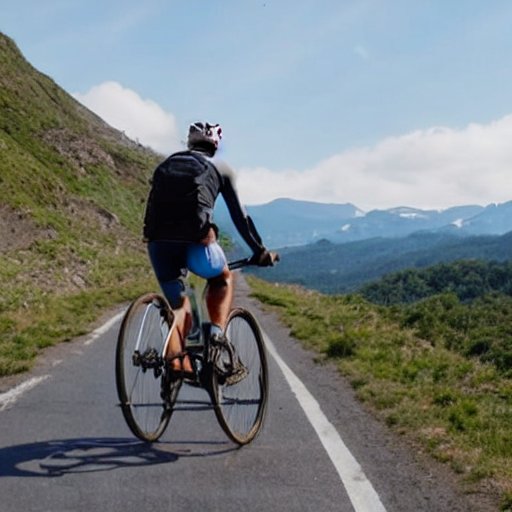
Compare that to a hardtail like the Norco Fluid that requires less specialized maintenance knowledge.
Not Ideal for All Riding Styles: While full-suspension bikes shine on gnarly descents and unpredictable trails, they might not be the best choice for smooth XC races or efficient road rides.
Consider how a full-suspension Giant Reign handles differently compared to a focused hardtail like the Giant XTC Advanced SL.
Comparing Maintenance and Longevity
When it comes to the longevity and maintenance of full suspension vs. hardtail bikes, there are some important considerations to keep in mind:
- Full Suspension Maintenance: The intricate nature of full suspension systems may require more regular maintenance, including shock and linkage inspections.
- Hardtail Simplicity: Hardtails often boast a simpler design, potentially resulting in lower maintenance needs.
- Durability Over Time: Proper care and maintenance can significantly extend the lifespan of both types of bikes.
Are Hardtails Better than Full-Suspension?
It’s not about one being better than the other. It’s about finding your thrill, embracing your style, and owning the trail with the bike that speaks to your heart.
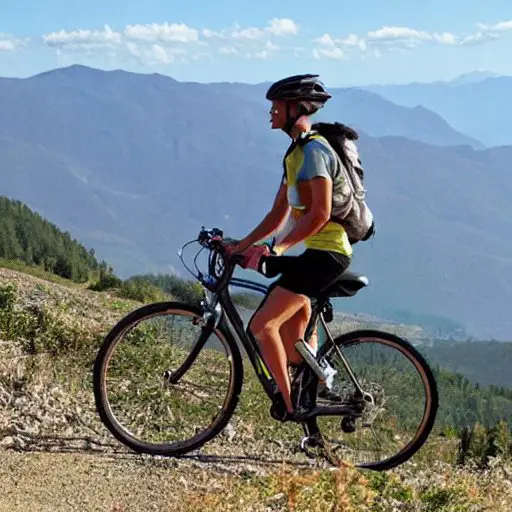
Whether you’re chasing podium finishes with a hardtail, dominating descents on a full-suspension beast, or exploring every trail in between, the true victory lies in the joy of the ride, the thrill of the adventure, and the unforgettable stories you create along the way.
For Different Riding Styles: Unleash Your Preference
You’re eyeing cross-country races like a pro.
That’s where hardtails like the Trek Procaliber 9.6 come in – its lightweight design, responsive handling, and efficient power transfer can give you a competitive edge, propelling you forward as you chase podium glory.
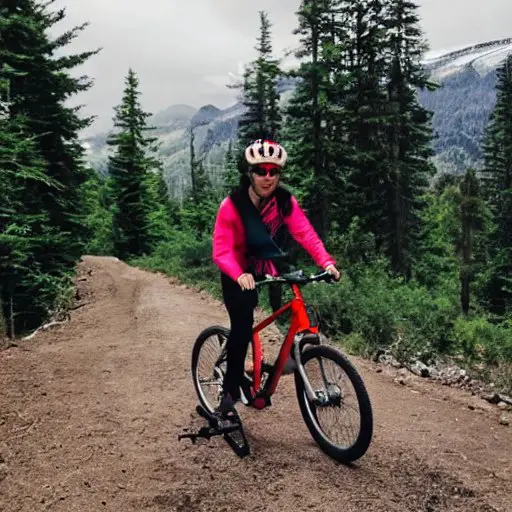
However, if you’re an all-terrain adventurer, eager to tackle technical descents and epic climbs with equal enthusiasm, the full-suspension Santa Cruz Tallboy steps onto the scene.
Its dual suspension setup, such as the VPP linkage, provides the comfort to keep you going during long rides while handling rough terrains with finesse.
When Climbing Calls: Scaling Heights with Style
Imagine conquering ascents like a mountain goat – hardtails, like the Cannondale F-Si Carbon 3, are all about giving you that exhilarating climb.
Its lightweight construction and efficient pedaling make uphill battles feel like a breeze, propelling you to the summit.
Now, let’s talk full-suspension magic. The Scott Spark RC 900 World Cup takes climbing to another level.
With its TwinLoc suspension system, you can adjust the bike’s geometry and suspension on-the-fly, transforming it into a climbing beast that defies gravity’s pull.
In the Realm of Technical Descents: Conquer the Wild
Feel the rush as you navigate treacherous descents – that’s where hardtails like the Norco Torrent HT S2 thrive.
They demand your skill and finesse, rewarding you with a direct connection to the terrain, allowing you to conquer the wild with confidence.
On the flip side, the full-suspension Yeti SB150 emerges as a trail dominator.
Its plush suspension system, equipped with features like the Switch Infinity, absorbs the trail’s chaos, transforming jagged rocks and steep drops into a smooth, controlled ride, amplifying your prowess on technical descents.
For Jumping and Airborne Acrobatics: Embrace the Sky
Ready to catch some air? The Commencal Meta HT AM Race 29, a hardtail beauty, elevates jumping to an art form.
It’s you, the bike, and the air – your skills dictate the rhythm, and every trick becomes an expression of your mastery.
But don’t underestimate the full-suspension Pivot Mach 5.5. It’s the ticket to boosting your confidence on jump tracks, thanks to its cushy suspension that ensures smoother landings.
As you send it skyward, the bike’s technology becomes your safety net, urging you to go bigger and bolder.
Maintenance Musings: Keeping the Wheels Rolling
When it comes to wrench time, hardtails keep it simple. Fewer parts mean less upkeep, and bikes like the Salsa Timberjack XT embody this straightforward approach.
You’ll spend less time in the garage and more time shredding trails.
However, modern full-suspension marvels like the Specialized Stumpjumper Evo Comp showcase a different side.
They pack reliability and cutting-edge technology into their design, minimizing maintenance woes while maximizing your precious trail time.
The Versatility Factor: A Bike for Every Mood
Yearning for versatility on a budget? The Trek Roscoe 7, a hardtail gem, is your go-to. It’s a trail explorer, a singletrack conqueror, and a cross-country cruiser, all in one.
No matter where your mood takes you, the Roscoe 7 is up for the adventure.
But don’t dismiss the full-suspension Rocky Mountain Altitude Carbon 70. It’s the Swiss Army knife of bikes, excelling on various terrains.
From technical singletracks to daring descents, this rig adapts to your every whim, leaving you grinning from ear to ear.
Dispelling Misconceptions – Addressing FAQ
Are full suspension bikes slower uphill?
The eternal uphill challenge! While full suspension bikes might carry a marginal weight increase, technological leaps like the Scott Spark RC debunk this notion.
This featherweight marvel zips up inclines, demonstrating that efficiency and climbing prowess can harmoniously coexist.
Can a hardtail handle technical trails?
Absolutely! The Niner Air 9 RDO, a hardtail gem, conquers technical trails with finesse.
Skillful riders navigate rocky terrain, showcasing that a hardtail can indeed be a potent ally in the pursuit of trail mastery.
Do I need a full suspension bike for jumps?
Hold on! While full suspension bikes like the Commencal Clash excel at cushioning landings, the Transition PBJ hardtail proves its mettle on the jumps of the Whistler Mountain Bike Park.
Skill and confidence are the real keys to mastering airborne tricks.
Are hardtails more reliable?
Hardtails, with their streamlined design, often boast reliability. Take the Chromag Surface, for instance – a robust hardtail built to endure the challenging trails of North Shore, Vancouver.
However, modern full suspension marvels like the Yeti SB115 offer reliability without compromising performance.
Are full suspension bikes only for experienced riders?
Not at all! Full suspension bikes cater to a diverse range of riders.
The Giant Trance, for instance, welcomes newcomers warmly while also satisfying the appetite for challenge among seasoned veterans. It’s all about aligning the bike with your aspirations.
Navigating Your Trail Destiny
There you have it, daring explorers! The pursuit of the safest ride has guided us through twists, turns, and exhilarating descents.
Is full suspension truly the safer option compared to the beloved hardtail? The answer, my friends, weaves a beautifully intricate tapestry spun from your riding ambitions, favored terrain, and personal inclinations.
As you etch your trail legacy, bear in mind that both full suspension and hardtails extend a safety embrace as distinctive as your journey itself.
Whether you luxuriate in the plush cocoon of full suspension or finesse intricate maneuvers on a hardtail, safety remains a partnership forged between rider and bike.
So, suit up, hit the trails, and let your heart guide you to the ride that ignites your soul.
Whether you’re soaring on the wings of full suspension or perfecting the art of finesse atop a hardtail, the ecstasy of the ride and the allure of the trail shall forever stand as your unwavering companions.

